To chant in a singsong is the tone that equals what mathematical communication? Is the satellite the excuse that explains? Where is the tack of that bridle, the bit of its communication? As this is merely a comment and as on the show (Ancient Aliens) that play on television or as Coast to Coast run the radio to people and their anxieties did the frequency of tone to that communication do the same as the first audio in Space? Is 'Chanting' the first audio communication that is both wireless communication and by remote without batteries included as the energy required is the guts that the real modulating wave that radio harnessed was found and discovered and began to be used in or around commercially in 1900?
"The first practical radio transmitters and receivers were developed around 1895-6 by Italian Guglielmo Marconi". -https://en.wikipedia.org/wiki/Radio
As the Country of India employs the flute and that is represented by the playing of pipes ( ) or known as the 'Pujas' and in such the address from would eventually show in and calculation a sort of numbering system that would be seen in some sort of state of being; possibly dreaming? The religious nature of a brace would be the echo or the tone of that fingering to the pipes that would in turn show (https://en.wikipedia.org/wiki/Worship_in_Hinduism) as dependent by the surroundings the sound barrier would not be broken. On this the C.H.P. is employed as the revving of that car is the engine as the sound comes to thermal chill (a Goose walking over my grave (adj. (danger)) and yet there on every freeway and highway in California and on the streets of San Francisco I never have worried as it is their silence that braces my wheel. The simplicity of this describe is the employment of the product of India as the temples and festivals as replicated all over the world would provide a sound continuum and for simpler understanding for the average-reader I will provide what the C.H.P. demonstrated to me as The Opera!! The dome in an Opera House provides only a portion of comprehension however the San Francisco Davies Symphony Hall (https://www.sfsymphony.org/) "The San Francisco Symphony, founded in 1911, is an American orchestra based in San Francisco, California. Since 1980, the orchestra is resident at the Louise M. Davies Symphony Hall in the City's Hayes Valley neighborhood" -Wikipedia explained thoroughly as my mother bought tickets to a show so that my comprehension would not fall to belief or faith. The C.H.P. is real and so are the Cops, there is no singsong or bladder included that does not resolve their prowess as the law is the expression that gave my life the drive to absolutely no contemplation, the safety was not an account that my knees ever had to discovery in the Bowery.
Trajectory to the library that is often spoken of by such shows (Ancient Aliens) that claim a collective conscious honest or in the browse of any concept that it is a two path horn as used by or in example by the can and the string. These simple basics are the backbone of many sorts, does the F.B.I./C.I.A. or N.S.A. know that those practicing chanting are placing at risk our country (U.S.A.)?
Is not the time on the clock the representation of the minutes down to doomsday? As there are these simple things that are mechanic is the human voice the tone that has yet to be added? Should the N.S.A. tone (Mathematics) represent this comprehension and as the tone is divided to add and/or multiply just on the fact of some countries chanting for or since the year of represented that gave 2019 a date would the work show more than religions worshiping their said?
As a drum does not flute is the echo of people whom chant a sound that created a tone that physics can define into what is said to be the noise of the sun?
Wouldn't it be interesting should all that chanting be the physics that the 'String Theory' was able to explain just as a Can? Clothes lines and dresses!!
Hindu temple
Elements in a Hindu temple architecture.
The spiritual principles symbolically represented in Hindu temples are given in the ancient Sanskrit texts of India (for example, Vedas and Upanishads), while their structural rules are described in various ancient Sanskrit treatises on architecture (Brhat Samhita, Vastu Sastras).[9][10] The layout, the motifs, the plan and the building process recite ancient rituals, geometric symbolisms, and reflect beliefs and values innate within various schools of Hinduism.[3] A Hindu temple is a spiritual destination for many Hindus, as well as landmarks around which ancient arts, community celebrations and economy have flourished.[11][12]
Hindu temples come in many styles, are situated in diverse locations, deploy different construction methods and are adapted to different deities and regional beliefs,[13] yet almost all of them share certain core ideas, symbolism and themes. They are found in South Asia particularly India and Nepal, in southeast Asian countries such as Sri Lanka, Cambodia, Vietnam, and islands of Indonesia and Malaysia,[14][15] and countries such as Canada, the Caribbean, Fiji, France, Guyana, Kenya, Mauritius, the Netherlands, South Africa, Suriname, Tanzania, Trinidad and Tobago, Uganda, the United Kingdom, the United States, and countries with a significant Hindu community.[16] The current state and outer appearance of Hindu temples reflect arts, materials and designs as they evolved over two millennia; they also reflect the effect of conflicts between Hinduism and Islam since the 12th century.[17] The Swaminarayanan Akshardham in Robbinsville, New Jersey, United States, between the New York and Philadelphia metropolitan areas, was inaugurated in 2014 as one of the world's largest Hindu temples.[18]
Contents
- 1 Significance and meaning of a Hindu temple
- 2 Forms and designs of Hindu temples
- 3 Social functions of Hindu temples
- 4 Styles
- 5 Arts inside Hindu temples
- 6 Historical development and destruction
- 7 Customs and etiquette
- 8 Regional variations in Hindu temples
- 8.1 Nagara Architecture of North Indian temples
- 8.2 Temples in West Bengal
- 8.3 Temples in Odisha
- 8.4 Temples of Goa and other Konkani temples
- 8.5 South Indian and Sri Lankan temples
- 8.6 Temples in Cambodia
- 8.7 Temples in Nepal
- 8.8 Temples in Vietnam
- 8.9 Temples in Indonesia
- 8.10 Temples in Thailand
- 8.11 Temples outside Asia
- 9 Temple management
- 10 Etymology and nomenclature
- 11 See also
- 12 References
- 13 Bibliography
Significance and meaning of a Hindu temple
A Hindu temple reflects a synthesis of arts, the ideals of dharma, beliefs, values, and the way of life cherished under Hinduism. It is a link between man, deities, and the Universal Purusa in a sacred space.[19] It represents the triple-knowledge (trayi-vidya) of the Vedic vision by mapping the relationships between the cosmos (brahmanda) and the cell (pinda) by a unique plan that is based on astronomical numbers.[20] Subhash Kak sees the temple form and its iconography to be a natural expansion of Vedic ideology related to recursion, change and equivalence.[21]
The
9x9 (81) grid ‘’Parama Sayika’’ layout plan (above) found in large
ceremonial Hindu Temples. It is one of many grids used to build Hindu
temples. In this structure of symmetry, each concentric layer has
significance. The outermost layer, Paisachika padas, signify aspects of
Asuras and evil; while inner Devika padas signify aspects of Devas and
good. In between the good and evil is the concentric layer of Manusha
padas signifying human life; All these layers surround Brahma padas,
which signifies creative energy and the site for temple’s primary idol
for darsana. Finally at the very center of Brahma padas is Grabhgriya
(Purusa Space), signifying Universal Principle present in everything and
everyone.[3]
Susan Lewandowski states[9] that the underlying principle in a Hindu temple is built around the belief that all things are one, everything is connected. The pilgrim is welcomed through 64-grid or 81-grid mathematically structured spaces, a network of art, pillars with carvings and statues that display and celebrate the four important and necessary principles of human life – the pursuit of artha (prosperity, wealth), the pursuit of kama (pleasure, sex), the pursuit of dharma (virtues, ethical life) and the pursuit of moksha (release, self-knowledge).[22][23] At the center of the temple, typically below and sometimes above or next to the deity, is mere hollow space with no decoration, symbolically representing Purusa, the Supreme Principle, the sacred Universal, one without form, which is present everywhere, connects everything, and is the essence of everyone. A Hindu temple is meant to encourage reflection, facilitate purification of one’s mind, and trigger the process of inner realization within the devotee.[3] The specific process is left to the devotee’s school of belief. The primary deity of different Hindu temples varies to reflect this spiritual spectrum.[24][25]
In Hindu tradition, there is no dividing line between the secular and the lonely sacred.[9] In the same spirit, Hindu temples are not just sacred spaces, they are also secular spaces. Their meaning and purpose have extended beyond spiritual life to social rituals and daily life, offering thus a social meaning. Some temples have served as a venue to mark festivals, to celebrate arts through dance and music, to get married or commemorate marriages,[26] commemorate the birth of a child, other significant life events, or mark the death of a loved one. In political and economic life, Hindu temples have served as a venue for the succession within dynasties and landmarks around which economic activity thrived.[27]
Forms and designs of Hindu temples
Almost all Hindu temples take two forms: a house or a palace. A house-themed temple is a simple shelter which serves as a deity’s home. The temple is a place where the devotee visits, just like he or she would visit a friend or relative. The use of moveable and immoveable images is mentioned by Pāṇini. In Bhakti school of Hinduism, temples are venues for puja, which is a hospitality ritual, where the deity is honored, and where devotee calls upon, attends to and connects with the deity. In other schools of Hinduism, the person may simply perform jap, or meditation, or yoga, or introspection in his or her temple. Palace-themed temples often incorporate more elaborate and monumental architecture.Site
The appropriate site for a temple, suggest ancient Sanskrit texts, is near water and gardens, where lotus and flowers bloom, where swans, ducks and other birds are heard, where animals rest without fear of injury or harm.[3] These harmonious places were recommended in these texts with the explanation that such are the places where gods play, and thus the best site for Hindu temples.[3][9]
Hindu temple sites cover a wide range. The most common sites are those near water bodies, embedded in nature, such as the Bhutanatha temple complex at Badami, which is next to a waterfall.
While major Hindu temples are recommended at sangams (confluence of rivers), river banks, lakes and seashore, Brhat Samhita and Puranas suggest temples may also be built where a natural source of water is not present. Here too, they recommend that a pond be built preferably in front or to the left of the temple with water gardens. If water is neither present naturally nor by design, water is symbolically present at the consecration of temple or the deity. Temples may also be built, suggests Visnudharmottara in Part III of Chapter 93,[29] inside caves and carved stones, on hill tops affording peaceful views, mountain slopes overlooking beautiful valleys, inside forests and hermitages, next to gardens, or at the head of a town street.The gods always play where lakes are,
where the sun’s rays are warded off by umbrellas of lotus leaf clusters,
and where clear waterpaths are made by swans
whose breasts toss the white lotus hither and thither,
where swans, ducks, curleys and paddy birds are heard,
and animals rest nearby in the shade of Nicula trees on the river banks.
The gods always play where rivers have for their braclets
the sound of curleys and the voice of swans for their speech,
water as their garment, carps for their zone,
the flowering trees on their banks as earrings,
the confluence of rivers as their hips,
raised sand banks as breasts and plumage of swans their mantle.
The gods always play where groves are near, rivers, mountains and springs, and in towns with pleasure gardens.— Brhat Samhita 1.60.4-8, 6th Century AD[28]
Manuals
Ancient builders of Hindu temples created manuals of architecture, called Vastu-Sastra (literally "science" of dwelling; vas-tu is a composite Sanskrit word; vas means "reside", tu means "you"); these contain Vastu-Vidya (literally, knowledge of dwelling).[30] There exist many Vastu-Sastras on the art of building temples, such as one by Thakkura Pheru, describing where and how temples should be built.[31][32] By the 6th century AD, Sanskrit manuals for in India.[33] Vastu-Sastra manuals included chapters on home construction, town planning,[30] and how efficient villages, towns and kingdoms integrated temples, water bodies and gardens within them to achieve harmony with nature.[34][35] While it is unclear, states Barnett,[36] as to whether these temple and town planning texts were theoretical studies and if or when they were properly implemented in practice, the manuals suggest that town planning and Hindu temples were conceived as ideals of art and integral part of Hindu social and spiritual life.[30]
Ancient
India produced many Sanskrit manuals for Hindu temple design and
construction, covering arrangement of spaces (above) to every aspect of
its completion. Yet, the Silpins were given wide latitude to experiment
and express their creativity.[37]
Ancient Sanskrit manuals for temple construction discovered in Rajasthan, in northwestern region of India, include Sutradhara Mandana’s Prasadamandana (literally, manual for planning and building a temple).[41] Manasara, a text of South Indian origin, estimated to be in circulation by the 7th century AD, is a guidebook on South Indian temple design and construction.[9][42] Isanasivagurudeva paddhati is another Sanskrit text from the 9th century describing the art of temple building in India in south and central India.[43][44] In north India, Brihat-samhita by Varāhamihira is the widely cited ancient Sanskrit manual from 6th century describing the design and construction of Nagara style of Hindu temples.[37][45][46]
The plan
Plan
Elements
of a Hindu temple in Kalinga style. There are many Hindu temple styles,
but they almost universally share common geometric principles,
symbolism of ideas, and expression of core beliefs.[3]
The four cardinal directions help create the axis of a Hindu temple, around which is formed a perfect square in the space available. The circle of mandala circumscribes the square. The square is considered divine for its perfection and as a symbolic product of knowledge and human thought, while circle is considered earthly, human and observed in everyday life (moon, sun, horizon, water drop, rainbow). Each supports the other.[3] The square is divided into perfect 64 (or in some cases 81) sub-squares called padas.[37][48] Each pada is conceptually assigned to a symbolic element, sometimes in the form of a deity. The central square(s) of the 64 or 81 grid is dedicated to the Brahman (not to be confused with Brahmin), and are called Brahma padas.
The 49 grid design is called Sthandila and of great importance in creative expressions of Hindu temples in South India, particularly in ‘‘Prakaras’’.[49] The symmetric Vastu-purusa-mandala grids are sometimes combined to form a temple superstructure with two or more attached squares.[50] The temples face sunrise, and the entrance for the devotee is typically this east side. The mandala pada facing sunrise is dedicated to Surya deity (Sun). The Surya pada is flanked by the padas of Satya (Truth) deity on one side and Indra (king of gods) deity on other. The east and north faces of most temples feature a mix of gods and demi-gods; while west and south feature demons and demi-gods related to the underworld.[51] This vastu purusha mandala plan and symbolism is systematically seen in ancient Hindu temples on Indian subcontinent as well as those in southeast Asia, with regional creativity and variations.[52][53]
Beneath the mandala’s central square(s) is the space for the formless shapeless all pervasive all connecting Universal Spirit, the highest reality, the purusha.[54] This space is sometimes referred to as garbha-griya (literally womb house) – a small, perfect square, windowless, enclosed space without ornamentation that represents universal essence.[47] In or near this space is typically a murti (idol). This is the main deity idol, and this varies with each temple. Often it is this idol that gives the temple a local name, such as Visnu temple, Krishna temple, Rama temple, Narayana temple, Siva temple, Lakshmi temple, Ganesha temple, Durga temple, Hanuman temple, Surya temple, and others.[19] It is this garbha-griya which devotees seek for ‘‘darsana’’ (literally, a sight of knowledge,[55] or vision[47]).
Above the vastu-purusha-mandala is a superstructure with a dome called Shikhara in north India, and Vimana in south India, that stretches towards the sky.[47] Sometimes, in makeshift temples, the dome may be replaced with symbolic bamboo with few leaves at the top. The vertical dimension's cupola or dome is designed as a pyramid, conical or other mountain-like shape, once again using principle of concentric circles and squares (see below).[3] Scholars suggest that this shape is inspired by cosmic mountain of Meru or Himalayan Kailasa, the abode of gods according to Vedic mythology.[47]
A
Hindu temple has a Shikhara (Vimana or Spire) that rises symmetrically
above the central core of the temple. These spires come in many designs
and shapes, but they all have mathematical precision and geometric
symbolism. One of the common principles found in Hindu temple spires is
circles and turning-squares theme (left), and a concentric layering
design (right) that flows from one to the other as it rises towards the
sky.[3][56]
Large temples also have pillared halls called mandapa. One on the east side, serves as the waiting room for pilgrims and devotees. The mandapa may be a separate structure in older temples, but in newer temples this space is integrated into the temple superstructure. Mega temple sites have a main temple surrounded by smaller temples and shrines, but these are still arranged by principles of symmetry, grids and mathematical precision. An important principle found in the layout of Hindu temples is mirroring and repeating fractal-like design structure,[57] each unique yet also repeating the central common principle, one which Susan Lewandowski refers to as "an organism of repeating cells".[27]
- Exceptions to the square grid principle
The symbolism
A Hindu temple is a symbolic reconstruction of the universe and universal principles that make everything in it function.[60][61] The temples reflect Hindu philosophy and its diverse views on cosmos and Truths.[57][62]Hinduism has no traditional ecclesiastical order, no centralized religious authorities, no governing body, no prophet(s) nor any binding holy book; Hindus can choose to be polytheistic, pantheistic, monistic, or atheistic.[63] Within this diffuse and open structure, spirituality in Hindu philosophy is an individual experience, and referred to as kṣaitrajña (Sanskrit: क्षैत्रज्ञ)[64]). It defines spiritual practice as one’s journey towards moksha, awareness of self, the discovery of higher truths, true nature of reality, and a consciousness that is liberated and content.[65][66] A Hindu temple reflects these core beliefs. The central core of almost all Hindu temples is not a large communal space; the temple is designed for the individual, a couple or a family – a small, private space where he or she experiences darsana.
Darsana is itself a symbolic word. In ancient Hindu scripts, darsana is the name of six methods or alternate viewpoints of understanding Truth.[67] These are Nyaya, Vaisesika, Sankhya, Yoga, Mimamsa and Vedanta – each of which flowered into their own schools of Hinduism, each of which are considered valid, alternate paths to understanding Truth and realizing Self in the Hindu way of life.
From names to forms, from images to stories carved into the walls of a temple, symbolism is everywhere in a Hindu temple. Life principles such as the pursuit of joy, sex, connection and emotional pleasure (kama) are fused into mystical, erotic and architectural forms in Hindu temples. These motifs and principles of human life are part of the sacred texts of Hindu, such as its Upanishads; the temples express these same principles in a different form, through art and spaces. For example, Brihadaranyaka Upanisad at 4.3.21, recites:
The architecture of Hindu temples is also symbolic. The whole structure fuses the daily life and it surroundings with the divine concepts, through a structure that is open yet raised on a terrace, transitioning from the secular towards the sacred,[70] inviting the visitor inwards towards the Brahma pada and temple’s central core, as well as lifting him upwards into a symbolic space marked by its spire (shikhara, vimana). The ancient temples had grand intricately carved entrances but no doors, and lacked a boundary wall. In most cultures, suggests Edmund Leach,[70] a boundary and gateway separates the secular and the sacred, and this gateway door is grand. In Hindu tradition, this is discarded in favor of an open and diffusive architecture, where the secular world was not separated from the sacred, but transitioned and flowed into the sacred.[71] The Hindu temple has structural walls, which were patterned usually within the 64 grid, or other geometric layouts. Yet the layout was open on all sides, except for the core space which had just one opening for darsana. The temple space is laid out in a series of courts (mandappas). The outermost regions may incorporate the negative and suffering side of life with symbolism of evil, asuras and rakshashas (demons); but in small temples this layer is dispensed with. When present, this outer region diffuse into the next inner layer that bridges as human space, followed by another inner Devika padas space and symbolic arts incorporating the positive and joyful side of life about the good and the gods. This divine space then concentrically diffuses inwards and lifts the guest to the core of the temple, where resides the main idol as well as the space for the Purusa and ideas held to be most sacred principles in Hindu tradition. The symbolism in the arts and temples of Hinduism, suggests Edmund Leach, is similar to those in Christianity and other major religions of the world.[72]In the embrace of his beloved a man forgets the whole world,
everything both within and without;
in the same way, he who embraces the Self,
knows neither within nor without.— Brihadaranyaka Upanishad, 7th Century BC[69]
The teams that built Hindu temples
The 6th-century Brihat samhita
is a Sanskrit encyclopedia. Its chapters 57-60 discuss different styles
and design of Hindu temples. Above: the text and commentary in
Nepalaksara, Devanagari and Tamil Grantha scripts.
The Hindu manuals of temple construction describe the education, characteristics of good artists and architects. The general education of a Hindu Shilpin in ancient India included Lekha or Lipi (alphabet, reading and writing), Rupa (drawing and geometry), Ganana (arithmetic). These were imparted from age 5 to 12. The advanced students would continue in higher stages of Shilpa Sastra studies till the age of 25.[77][78] Apart from specialist technical competence, the manuals suggest that best Silpins for building a Hindu temple are those who know the essence of Vedas and Agamas, consider themselves as students, keep well verse with principles of traditional sciences and mathematics, painting and geography.[31] Further they are kind, free from jealousy, righteous, have their sense under control, of happy disposition, and ardent in everything they do.[43]
According to Silparatna, a Hindu temple project would start with a Yajamana (patron), and include a Sthapaka (guru, spiritual guide and architect-priest), a Sthapati (architect) who would design the building, a Sutragrahin (surveyor), and many Vardhakins (workers, masons, painters, plasterers, overseers) and Taksakas (sculptors).[31][45] While the temple is under construction, all those working on the temple were revered and considered sacerdotal by the patron as well as others witnessing the construction.[74] Further, it was a tradition that all tools and materials used in temple building and all creative work had the sanction of a sacrament.[31] For example, if a carpenter or sculptor needed to fell a tree or cut a rock from a hill, he would propitiate the tree or rock with prayers, seeking forgiveness for cutting it from its surroundings, and explaining his intent and purpose. The axe used to cut the tree would be anointed with butter to minimize the hurt to the tree.[43] Even in modern times, in some parts of India such as Odisha, Visvakarma Puja is a ritual festival every year where the craftsmen and artists worship their arts, tools and materials.[79]
Social functions of Hindu temples
Hindu Shiva temple depicted in a coin from the 1st century BCE.
Example of a Hindu temple constructed in the same manner as the one depicted in the coin.
The Golden Temple at Vellore is gilded with 1500 kg of pure gold.
In contemporary times, the process of building a Hindu temple by emigrants and diasporas from South Asia has also served as a process of building a community, a social venue to network, reduce prejudice and seek civil rights together.[86]
Library of manuscripts
| |||||
Palm-leaf manuscripts called lontar in dedicated stone libraries have been discovered by archaeologists at Hindu temples in Bali Indonesia and in 10th century Cambodian temples such as Angkor Wat and Banteay Srei.[90]
Temple schools
Inscriptions from the 4th century AD suggest the existence of schools around Hindu temples, called Ghatikas or Mathas, where the Vedas were studied.[91] In south India, 9th century Vedic schools attached to Hindu temples were called Calai or Salai, and these provided free boarding and lodging to students and scholars.[92][93] The temples linked to Bhakti movement in the early 2nd millennium, were dominated by non-Brahmins.[94] These assumed many educational functions, including the exposition, recitation and public discourses of Sanskrit and Vedic texts.[94] Some temple schools offered wide range of studies, ranging from Hindu scriptures to Buddhist texts, grammar, philosophy, martial arts, music and painting.[80][95] By the 8th century, Hindu temples also served as the social venue for tests, debates, team competition and Vedic recitals called Anyonyam.[80][95]Hospitals, community kitchen, monasteries
According to Kenneth G. Zysk – a professor specializing in Indology and ancient medicine, Hindu mathas and temples had by the 10th-century attached medical care along with their religious and educational roles.[96] This is evidenced by various inscriptions found in Bengal, Andhra Pradesh and elsewhere. An inscription dated to about AD 930 states the provision of a physician to two matha to care for the sick and destitute. Another inscription dated to 1069 at a Vishnu temple in Tamil Nadu describes a hospital attached to the temple, listing the nurses, physicians, medicines and beds for patients. Similarly, a stone inscription in Andhra Pradesh dated to about 1262 mentions the provision of a prasutishala (maternity house), vaidya (physician), an arogyashala (health house) and a viprasattra (hospice, kitchen) with the religious center where people from all social backgrounds could be fed and cared for.[96][97] According to Zysk, both Buddhist monasteries and Hindu religious centers provided facilities to care for the sick and needy in the 1st millennium, but with the destruction of Buddhist centers after the 12th century, the Hindu religious institutions assumed these social responsibilities.[96] According to George Michell, Hindu temples in South India were active charity centers and they provided free meal for wayfarers, pilgrims and devotees, as well as boarding facilities for students and hospitals for the sick.[98]The 15th and 16th century Hindu temples at Hampi featured storage spaces (temple granary, kottara), water tanks and kitchens.[99][100][101] Many major pilgrimage sites have featured dharmashalas since early times. These were attached to Hindu temples, particularly in South India, providing a bed and meal to pilgrims. They relied on any voluntary donation the visitor may leave and to land grants from local rulers.[102] Some temples have operated their kitchens on daily basis to serve the visitor and the needy, while others during major community gatherings or festivals. Examples include the major kitchens run by Hindu temples in Udupi (Karnataka), Puri (Odisha) and Tirupati (Andhra Pradesh). The tradition of sharing food in smaller temple is typically called prasada.[102][103]
Styles
Hindu temples are found in diverse locations each incorporating different methods of construction and styles:- Mountain[56] temples such as Masrur
- Cave[104] temples such as Chandrabhaga, Chalukya[105] and Ellora
- Step well temple compounds such as the Mata Bhavani, Ankol Mata and Huccimallugudi.[106]
- Forest[104] temples such as Kasaun and Kusama[107]
- River bank and sea shore temples such as Somnath.
- Step well temples
- Cave Temples
Arts inside Hindu temples
Illustration of Chitrardha style of art work in a Hindu temple.
Ancient Sanskrit texts classify idols and images in number of ways. For example, one method of classification is the dimensionality of completion:[110]
- Chitra – images that are 3-dimensional and completely formed,
- Chitrardha – images that are engraved in half relief,
- Chitrabhasa – images that are 2-dimensional such as paintings on walls and cloths.
Images
and idols inside Hindu temples vary widely in their expression. Raudra
or ugra images express destruction, fear and violence, such as Kali
image on left. Shanta or saumya images express joy, knowledge and
harmony, such as Saraswati image on right. Saumya images are most common
in Hindu temples.
- Raudra or ugra – are images that were meant to terrify, induce fear. These typically have wide, circular eyes, carry weapons, have skulls and bones as adornment. These idols were worshiped by soldiers before going to war, or by people in times of distress or terrors. Raudra deity temples were not set up inside villages or towns, but invariably outside and in remote areas of a kingdom.[110]
- Shanta and saumya – are images that were pacific, peaceful and expressive of love, compassion, kindness and other virtues in Hindu pantheon. These images would carry symbolic icons of peace, knowledge, music, wealth, flowers, sensuality among other things. In ancient India, these temples were predominant inside villages and towns.[110]
शिवमात्मनि पश्यन्ति प्रतिमासु न योगिनः |
अज्ञानं भावनार्थाय प्रतिमाः परिकल्पिताः || ५९ ||
- जाबालदर्शनोपनिषत्A yogin perceives god (Siva) within himself,
images are for those who have not reached this knowledge. (Verse 59)— Jabaladarsana Upanishad, [111]
Historical development and destruction
- Iconoclasm during the Muslim conquests in the Indian subcontinent
- The Somnath Temple in Gujarat was repeatedly destroyed by Islamic armies and rebuilt by Hindus. It was destroyed by Delhi Sultanate's army in 1299 CE.[112]
- The Kashi Vishwanath Temple was destroyed by the army of Qutb-ud-din Aibak.
- Ruins of the Martand Sun Temple. The temple was completely destroyed on the orders of Muslim Sultan Sikandar Butshikan in the early 15th century, with demolition lasting a year.
- The armies of Delhi Sultanate led by Muslim Commander Malik Kafur plundered the Meenakshi Temple and looted it of its valuables.
- Kakatiya Kala Thoranam (Warangal Gate) built by the Kakatiya dynasty in ruins; one of the many temple complexes destroyed by the Delhi Sultanate.[113]
- Rani ki vav is a stepwell, built by the Chaulukya dynasty, located in Patan; the city was sacked by Sultan of Delhi Qutb-ud-din Aybak between 1200 and 1210, and it was destroyed by the Allauddin Khilji in 1298.[113]
- Artistic rendition of the Kirtistambh at Rudra Mahalaya Temple. The temple was destroyed by Alauddin Khalji.
- Exterior wall reliefs at Hoysaleswara Temple. The temple was twice sacked and plundered by the Delhi Sultanate.[114]
| |||||
Early Jainism and Buddhism literature, along with Kautilya’s Arthashastra, describe structures, embellishments and designs of these temples – all with motifs and deities currently prevalent in Hinduism. Bas-reliefs and idols have been found from 2nd to 3rd Century, but none of the temple structures have survived. Scholars[116] theorize that those ancient temples of India, later referred to as Hindu temples, were modeled after domestic structure – a house or a palace. Beyond shrines, nature was revered, in forms such as trees, rivers, stupas before the time of Buddha and Vardhamana Mahavira. As Jainism and Buddhism branched off from the religious tradition later to be called Hinduism, the ideas, designs and plans of ancient Vedic and Upanishad era shrines were adopted and evolved, likely from the competitive development of temples and arts in Jainism and Buddhism. Ancient reliefs found so far, states Michael Meister,[116] suggest five basic shrine designs and combinations thereof in 1st millennium BC:
- A raised platform with or without a symbol
- A raised platform under an umbrella
- A raised platform under a tree
- A raised platform enclosed with a railing
- A raised platform inside a pillared pavilion
Ladkhan Shiva Temple in Karnataka from the 5th century.
A 7th century Chalukyan style temple ceiling in Karnataka.
The 4th through 6th century marked the flowering of Vidharbha style, whose accomplishments survive in central India as Ajanta caves, Pavnar, Mandhal and Mahesvar. In South India, this period is credited with some of the earliest stone temples of the region, with Chalukya temples dated to be from the 5th century by some scholars,[122] and the 6th by some others.[123] Over 6th and 7th century, temple designs were further refined during Maurya dynasty, evidence of which survives today at Ellora and Elephanta.
Many
Hindu temples were destroyed and the remains used to rebuild Islamic
mosques between 12th and 18th century AD. Above drawing by James Prinsep (1832) shows an overlay of a mosque built over the ancient Hindu Vishveshvur temple.
During the 5th to 11th century, Hindu temples flourished outside Indian subcontinent, such as in Cambodia, Viet Nam, Malaysia and Indonesia.
- Destruction and conversion
The destruction of Hindu temple sites was comparatively less in the southern parts of India, such as in Tamil Nadu. Cave style Hindu temples that were carved inside a rock, hidden and rediscovered centuries later, such as the Kailasha Temple, have also survived. These are now UNESCO world heritage sites.[129]
Customs and etiquette
When inside the temple, devotees keep both hands folded (namaste mudra). The inner sanctuary, where the murtis reside, is known as the garbhagriha. It symbolizes the birthplace of the universe, the meeting place of the gods and mankind, and the threshold between the transcendental and the phenomenal worlds.[130] It is in this inner shrine that devotees seek a darsana of, where they offer prayers. Devotees may or may not be able to personally present their offerings at the feet of the deity. In most large Indian temples, only the pujaris (priest) are allowed to enter into the main sanctum.[131]
Temple management staff typically announce the hours of operation, including timings for special pujas. These timings and nature of special puja vary from temple to temple. Additionally, there may be specially allotted times for devotees to perform circumambulations (or pradakshina) around the temple.[131]
Visitors and worshipers to large Hindu temples may be required to deposit their shoes and other footwear before entering. Where this is expected, the temples provide an area and help staff to store footwear. Dress codes vary. It is customary in temples in Kerala, for men to remove shirts and to cover pants and shorts with a traditional cloth known as a Vasthiram.[132] In Java and Bali (Indonesia), before one enters the most sacred parts of a Hindu temple, shirts are required as well as Sarong around one's waist.[133] At many other locations, this formality is unnecessary.
Regional variations in Hindu temples
Nagara Architecture of North Indian temples
North Indian temples are referred to as Nagara style of temple architecture.[134] They have sanctum sanctorum where the deity is present, open on one side from where the devotee obtains darśana. There may or may not be many more surrounding corridors, halls, etc. However, there will be space for devotees to go around the temple in clockwise fashion circumambulation. In North Indian temples, the tallest towers are built over the sanctum sanctorum in which the deity is installed.[135]The north India Nagara style of temple designs often deploy fractal-theme, where smaller parts of the temple are themselves images or geometric re-arrangement of the large temple, a concept found in French and Russian architecture such as the matryoshka principle. One difference is the scope and cardinality, where Hindu temple structures deploy this principle in every dimension with garbhgriya as the primary locus, and each pada as well as zones serving as additional centers of loci. This makes a Nagara Hindu temple architecture symbolically a perennial expression of movement and time, of centrifugal growth fused with the idea of unity in everything.[134]
Temples in West Bengal
In West Bengal, the Bengali terra cotta temple architecture is found. Due to lack of suitable stone in the alluvial soil locally available, the temple makers had to resort to other materials instead of stone. This gave rise to using terracotta as a medium for temple construction. Terracotta exteriors with rich carvings are a unique feature of Bengali temples. The town of Vishnupur in West Bengal is renowned for this type of architecture. There is also a popular style of building known as Navaratna (nine-towered) or Pancharatna (five-towered). An example of Navaratna style is the Dakshineswar Kali Temple.[136]Temples in Odisha
Odisha temple architecture is known as Kalinga architecture, classifies the spire into three parts, the Bāḍa (lower limb), the Ganḍi (body) and the Cuḷa/Mastaka (head). Each part is decorated in a different manner. Kalinga architecture is a style which flourished in Kalinga, the name for kingdom that included ancient Odisha. It includes three styles: Rekha Deula, Pidha Deula and Khakhara Deula.[137] The former two are associated with Vishnu, Surya and Shiva temples while the third is mainly associated with Chamunda and Durga temples. The Rekha Deula and Khakhara Deula houses the sanctum sanctorum while the Pidha Deula style includes space for outer dancing and offering halls.Temples of Goa and other Konkani temples
Saptakoteshwar Temple, Goa.
South Indian and Sri Lankan temples
The gopuram (tower) of Natarajar Temple, a typical South Indian temple complex in Chidambaram, Tamil Nadu.
Temples in Kerala
Temples in Kerala have a different architectural style (keeping the same essence of Vastu), especially due to climatic differences Kerala have with other parts of India with larger rainfall. The temple roof is mostly tiled and is sloped and the walls are often square, the innermost shrine being entirely enclosed in another four walls to which only the pujari (priest) enters. The walls are decorated with either mural paintings or rock sculptures which many times are emphasised on Dwarapalakas.Temples in Karnataka (Tulu Nadu)
Temples in Karnataka (Tulu Nadu) have a unique style of architecture and have been constructed according to vasthu. Among these Shri Agnidurga Gopalkrishna Temple (Gurupur, Mangalore), Sri Gokarnanatheshwara Temple (Kadri), Sri Kudtheri Mahamaya Temple, Sri Sowthedka Temple, Sri Mahothobaara Kotilingeshwara Temple, Sri Chandramouleswara Temple, Sri Brahma Baidarkala Garadi Temple, Sri Durga Parameshwari Temple, Sri Somanatheshwara Temple, Sri Manjunatha Temple, Sri Subramanya Temple, Sri Mahaganapati Temple, Sri Durga Parameshwari Temple, Sri Durga Parameshwari Temple, Sri Adi Janardana Temple, Sri Mookambika Temple, Sri Durgaparameshwari Temple, Sri Vinayaka Temple, Sri Shankara Narayana Temple, Sri Durga Parameshwari Temple, Sri Vishwanatha Temple, Sri Amrutheshwara Temple, Sri Subramanya Temple, Sri Raja Rajeshwari Temple, Sri Kadri Manjunatha Temple, Sri Mangaladevi Temple, Sri Mahalingeshwara Temple, Sri Somanatheshwara Temple, Sri Durga Parameshwari Temple, Sri Vishnu Murthy Temple, Sri Durga Parameshwari Temple, Sri Mahalingeshwara Mahaganapati Temple, Sri Janardana Swamy Temple, Sri Ananteshwara Vinayaka Temple, Sri Mahisha Mardini Temple among others are famous temples and with lot of religious activities.Temples in Tamil Nadu
Temple construction reached its peak during rule of Pallavas. They built various temples around Kancheepuram, and Narasimhavarman II built the Shore Temple in Mamallapuram, a UNESCO World Heritage Site. The Pandyas rule created temples such as the Meenakshi Amman Temple at Madurai and Nellaiappar Temple at Tirunelveli.[144] The Cholas were prolific temple builders right from the times of the first medieval king Vijayalaya Chola. The Chola temples include Nataraja temple at Chidambaram, the Sri Ranganathaswami Temple at Srirangam, the Brihadeshvara Temple of Thanjavur, Brihadeshvara Temple of Gangaikonda Cholapuram and the Airavatesvara Temple of Darasuram which are among the UNESCO World Heritage Sites. The Nayaks of Madurai reconstructed some of the well-known temples in Tamil Nadu such as the Meenakshi Temple.[9][145]
An aerial view of the Meenakshi Temple from the top of the southern gopuram, looking north. The temple was rebuilt by the Vijayanagar Empire.
Temples in Cambodia
Art relief at the Hindu temple Banteay Srei in Cambodia.
Angkor Wat is just one of numerous Hindu temples in Cambodia, most of them in ruins. Hundreds of Hindu temples are scattered from Siem Reap to Sambor Prei Kuk in central Cambodian region.[147]
Temples in Nepal
Pashupatinath temple is one of the important temples of Hindu religion which is situated in Kathmandu, Nepal.[148] It is built in a pagoda style and is surrounded by hundreds of temples and buildings built by kings. The temples top is made from pure gold.Temples in Vietnam
Partially ruined Mỹ Sơn Hindu temple complex, Vietnam.
Temples in Indonesia
Ancient Hindu temples in Indonesia are called Candi (read: chandi). Hindu temples of ancient Java bear resemblances with temples of South Indian style. The largest of these is the 9th century Javanese Hindu temple, Prambanan in Yogyakarta, now a UNESCO world heritage site. It was designed as three concentric squares and has 224 temples. The inner square contains 16 temples dedicated to major Hindu deities, of which Shiva temple is the largest.[151] The temple has extensive wall reliefs and carvings illustrating the stories from the Hindu epic Ramayana.[152]In Bali, the Hindu temple is known as "Pura", which is designed as an open-air worship place in a walled compound. The compound walls have a series of intricately decorated gates without doors for the devotee to enter. The design, plan and layout of the holy pura follows a square layout.[153][154]
Temples in Thailand
Thailand has many notable Hindu temples including: the Sri Mariammam temple in Bangkok, the Devasathan, the Erawan Shrine, Prasat Muang Tam, Sdok Kok Thom and Phanom Rung. Most of the newer Hindu temples are of South Indian origin and were built by Tamil migrant communities. However, Thailand has many historic indigenous Hindu temples such as Phanom Rung. Although most indigenous Hindu temples are ruins, a few such as Devasathan in Bangkok are actively used.Temples outside Asia
Temple management
The Archaeological Survey of India has control of most ancient temples of archaeological importance in India. In India, day-to-day activities of a temple is managed by a temple board committee that administers its finances, management, and events. Since independence, the autonomy of individual Hindu religious denominations to manage their own affairs with respect to temples of their own denomination has been severely eroded and the state governments have taken control of major Hindu temples in some countries; however, in others, such as the United States, private temple management autonomy has been preserved.Etymology and nomenclature
Major Hindu temple sites for Tirtha and general tourism in India. Orange markers are UNESCO world heritage sites.
The following are the other names by which a Hindu temple is referred to in India:
- Devasthana (ದೇವಸ್ಥಾನ) in Kannada
- Deul/Doul/Dewaaloy in Assamese and in Bengali
- Deval/Raul/Mandir(मंदिर) in Marathi
- Devro/Mindar in Rajasthani
- Deula (ଦେଉଳ)/Mandira(ମଦିର) in Odia and Gudi in Kosali Odia
- Gudi (గుడి), Devalayam (దేవాలయం), Devasthanam (దేవస్థానము), Kovela (కోవెల), Kshetralayam (క్షేత్రాలయం), Punyakshetram (పుణ్యక్షేత్రం), or Punyakshetralayam (పుణ్యక్షేత్రాలయం), Mandiramu (మందిరము) in Telugu
- Kshetram (ക്ഷേത്രം), Ambalam (അമ്പലം), or Kovil (കോവിൽ) in Malayalam
- Mandir (मंदिर) in Hindi, Nepali, Kashmiri, Marathi, Punjabi (ਮੰਦਰ), Gujarati (મંદિર), and Urdu (مندر)[159]
- Mondir (মন্দির) in Bengali
- Candi in Indonesia, especially in Javanese, Malay and Indonesian, used both for Hindu or Buddhist temples.
- Pura in Hindu majority island of Bali, Indonesia.
- Wat in Cambodia and Thailand, also applied to both Hindu and Buddhist temples.
- Temple sites
See also
- Hindu temple architecture
- List of Hindu temples
- List of largest Hindu temples
- List of Hindu deities
- Dambana
References
- Knut A. Jacobsen (2012), Pilgrimage in the Hindu Tradition: Salvific Space, Routledge, ISBN 978-0415590389
Bibliography
- Meister, Michael W. (1985). "Measurement and Proportion in Hindu Temple Architecture". Interdisciplinary Science Reviews. 10 (3): 248–258. doi:10.1179/isr.1985.10.3.248.
- Stella Kramrisch, Hindu Temple, ISBN 978-8120802223
- Goel, S. R., and Arun Shourie. 1992. Hindu temples: what happened to them. New Delhi: Voice of India.
- Michael W. Meister, Encyclopaedia of Indian Temple Architecture, ISBN 978-0195615371
- George Michell, The Hindu Temple: An Introduction to Its Meaning and Forms, ISBN 978-0226532301
- Ram Rāz, Henry Harkness (1834), Essay on the Architecture of the Hindus at Google Books - on Hindu Temple Vimana, Pillars and Śilpa Śastras
- Nagar, Shanti Lal. 1990. The temples of Himachal Pradesh. New Delhi: Aditya Prakashan.
- Kṛṣṇa Deva. 1995. Temples of India. New Delhi: Aryan Books International.
| Wikimedia Commons has media related to Hindu temples. |
| Wikiquote has quotations related to: Hindu temple |
Languages
- Gaborieau, Marc (1985). "From Al-Beruni to Jinnah: idiom, ritual and ideology of the Hindu-Muslim confrontation in South Asia". Anthropology Today. Royal Anthropological Institute of Great Britain and Ireland. 1 (3): 7–14. doi:10.2307/3033123. JSTOR 3033123.
- Richard Eaton (2000), "Temple Desecration and Indo-Muslim States", Journal of Islamic Studies, 11(3), pp. 283-319.
- Annemarie Schimmel, Islam in the Indian Subcontinent, ISBN 978-9004061170, Brill Academic, Chapter 1
- Robert W. Hefner, Civil Islam: Muslims and Democratization in Indonesia, Princeton University Press, ISBN 978-0691050461, pp. 28-29.
- Julius J. Lipner, Hindus: Their Religious Beliefs and Practices, 2nd Edition, Routledge, ISBN 978-0-415-45677-7, page 8; Quote: "(...) one need not be religious in the minimal sense described to be accepted as a Hindu by Hindus, or describe oneself perfectly validly as Hindu. One may be polytheistic or monotheistic, monistic or pantheistic, even an agnostic, humanist or atheist, and still be considered a Hindu.";
- Lester Kurtz (Ed.), Encyclopedia of Violence, Peace and Conflict, ISBN 978-0123695031, Academic Press, 2008;
- MK Gandhi, The Essence of Hinduism, Editor: VB Kher, Navajivan Publishing, see p. 3; According to Gandhi, "a man may not believe in God and still call himself a Hindu."
- क्षैत्रज्ञ [ kṣaitrajña ] [ kṣaitrajña ] n. ( fr. [ kṣetra-jñá ] g. [ yuvādi ], spirituality, nature of the soul Lit. W.; the knowledge of the soul Lit. W.
- Bhavasar and Kiem, "Spirituality and Health", in Hindu Spirituality, Editor: Ewert Cousins (1989), ISBN 0-8245-0755-X, Crossroads Publishing New York, pp. 319-337;
- John Arapura, "Spirit and Spiritual Knowledge in the Upanishads", in Hindu Spirituality, Editor: Ewert Cousins (1989), ISBN 0-8245-0755-X, Crossroads Publishing New York, pp. 64-85.
- Diana L. Eck (2000), "Negotiating Hindu Identities in the US", in Harold Coward, John R. Hinnells, and Raymond Brady Williams (Editors) – The South Asian Religious Diaspora in Britain, Canada, and the United States, SUNY Press, ISBN 978-0-7914-4509-9, 219–237
- Marion O'Callaghan (1998), "Hinduism in the Indian Diaspora in Trinidad", Journal of Hindu-Christian Studies, Vol. 11, Article 5, doi 10.7825/2164-6279.1178
- Chandra Jayawardena, "Religious Belief and Social Change: Aspects of the Development of Hinduism in British Guiana", Comparative Studies in Society and History, Vol. 8, No. 2 (January 1966), pp. 211-240.
- Elizabeth Merklinger, The Mosques of Raichur: A preliminary classification, Kunst des Orients, Vol. 12, H. 1/2 (1978/1979), pp. 79-94.
- Mark Jarzombek et al. (2010), A Global History of Architecture, Wiley, ISBN 978-0470402573, Chapters and Sections: "1200 CE – Delhi through Qutb Minar"
- Ali Javid, World Heritage Monuments and Related Edifices in India, Volume 1, ISBN 978-0875864839, pp. 263. Quote - "The stones to construct the mosque were obtained by demolishing twenty seven Hindu and Jain temples."
- Peter Jackson (2003), The Delhi Sultanate: A Political and Military History, Cambridge University Press, ISBN 978-0521543293, pp. 168
- A.L. Srivastava (1966), Delhi Sultanate, 5th Edition, Agra College
- Vincent Smith (1920), The Oxford History of India: From the Earliest Times to the End of 1911, Oxford University Press, pp. 268-269, 306-307, 437-438
Specifically Hindu cultural contexts such as the pūjā 'worship' in the mandir 'temple' will clearly generate a predominance of Sanskrit vocabulary in Urdu as well as Hindi usage.





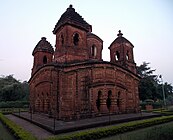
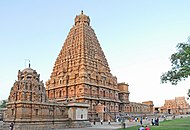



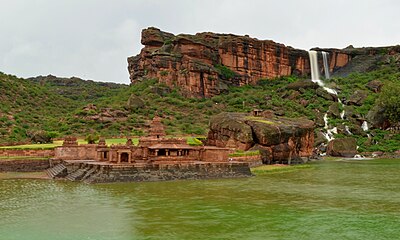






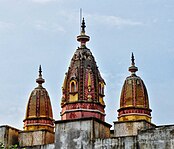













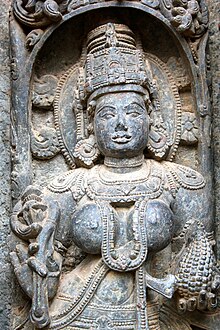





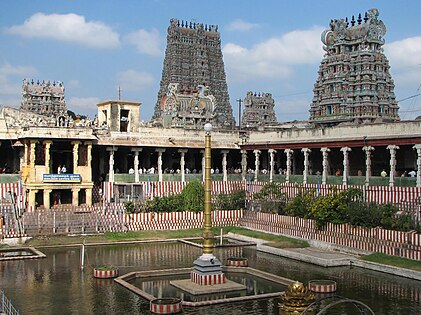
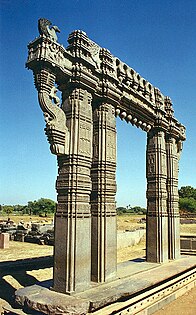
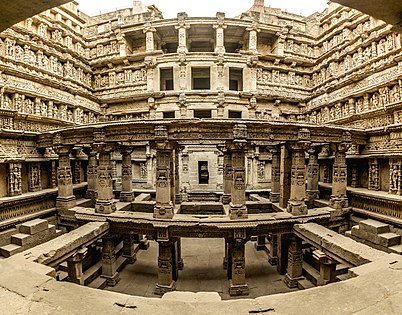
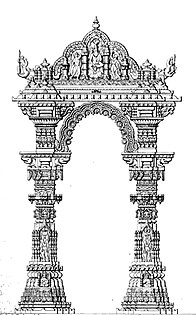


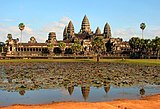

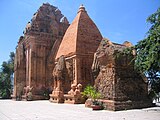
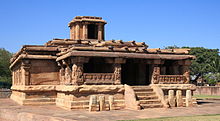








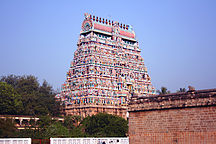

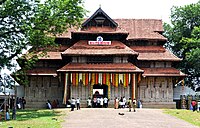






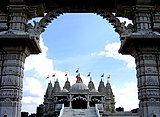
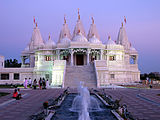
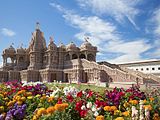

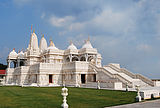
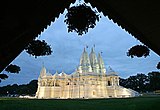
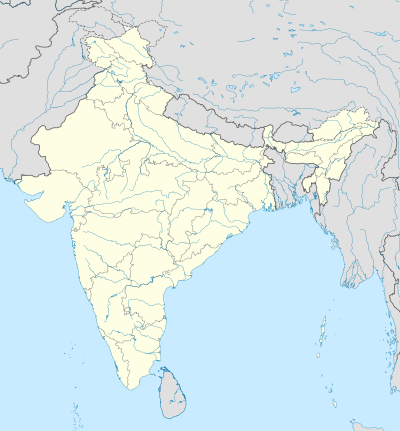










No comments:
Post a Comment